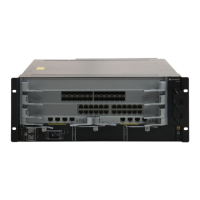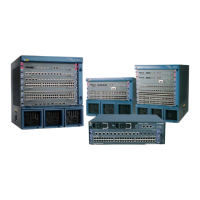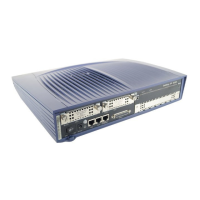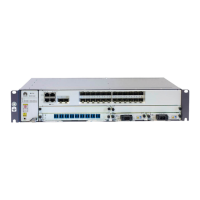Port
Type
Method of
Processing
Received
Untagged Frames
Method of
Processing
Received
Tagged
Frames
Method of
Sending
Frames
Application
QinQ
port
QinQ ports are enabled with the IEEE 802.1QinQ protocol. A QinQ port adds
a tag to a single-tagged frame, and thus supports a maximum of 4094 x 4094
VLAN tags, which meets the requirement of a Networkfor the number of
VLANs.
Each access, trunk, hybrid, or QinQ port can be configured with a default VLAN, namely,
the port default VLAN ID (PVID) to specify the VLAN to which the port belongs.
– The PVID of an access port indicates the VLAN to which the port belongs.
– As a trunk or hybrid port can be added to multiple VLANs, the port must be configured
with PVIDs.
By default, a port is added to VLAN 1.
l Principle for data switching in a VLAN
Use the network shown in Figure 3-4 as an example. If PC 1 in VLAN 2 intends to send
data to PC 2, the data is forwarded as follows:
1. An access port on CE 1 receives an untagged frame from PC 1 and adds a PVID
(VLAN 2) to the frame. CE 1 searches the MAC address table for an outbound port.
NOTE
Assume that VLANs are configured based on MAC addresses. After an access port on CE 1
receives an untagged frame from PC 1, the port checks the VLAN mapping table for a VLAN
ID corresponding to the source MAC address, and adds a tag with the obtained VLAN ID to
the frame.
2. After the trunk port on CE 1 and PE receives the frame, the port checks whether the
VLAN ID carried in the frame is the same as that configured on the port. If the VLAN
ID has been configured on the port, the port transparently transmits the frame to CE
2. If the VLAN ID is not configured on the port, the port discards the frame.
3. After a trunk port on CE 2 receives the frame, the system searches the MAC address
table for an outbound port.
4. After the frame is sent to the access port connecting CE 2 to PC 2, the port checks that
the VLAN ID carried in the frame is the same as that configured on the port. The port
then removes the tag from the frame and sends the untagged frame to PC 2.
l VLANIF interface
A VLANIF interface is a Layer 3 logical interface, which can be configured on either a
Layer 3 switch or a router.
Layer 3 switching combines routing and switching techniques to implement routing on a
switch, thus improving the overall network performance. After sending the first data flow,
a Layer 3 switch generates mappings between MAC addresses and IP addresses. To send
the same data flow, the switch directly sends the data flow at Layer 2 but not Layer 3 based
on this mapping table. In this manner, delays on the network caused by route selection are
eliminated, thus improving data forwarding efficiency. Layer 3 switches have both
switching and routing functions.
Quidway S7700 Smart Routing Switch
Configuration Guide - Ethernet 3 VLAN Configuration
Issue 01 (2011-07-15) Huawei Proprietary and Confidential
Copyright © Huawei Technologies Co., Ltd.
70

